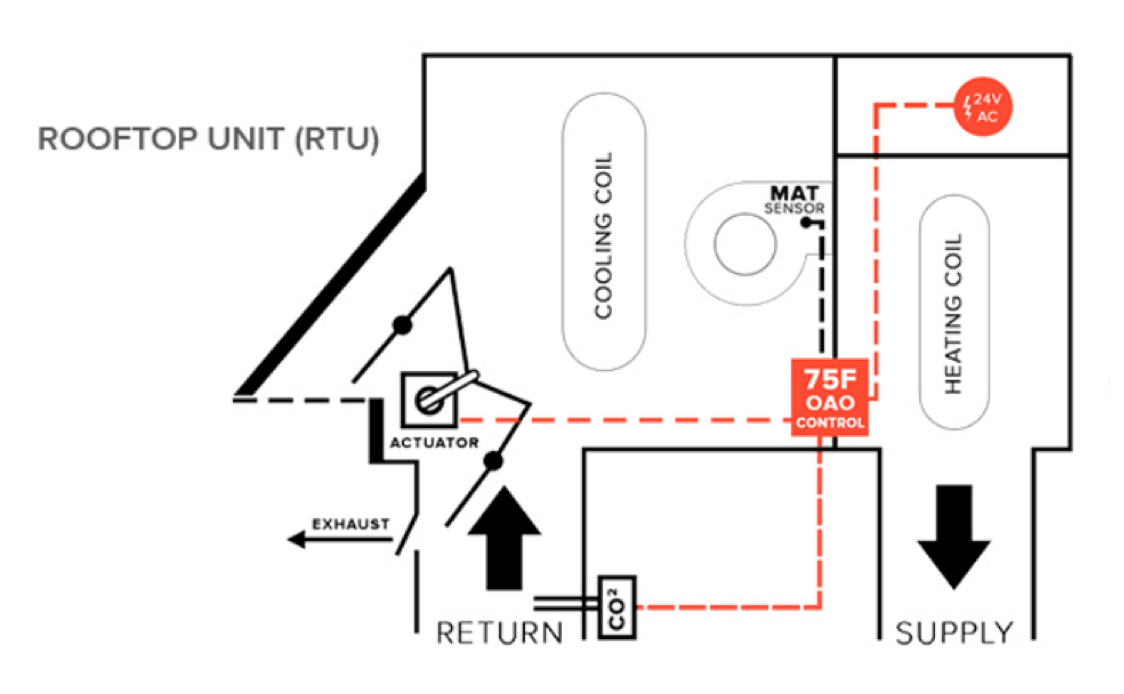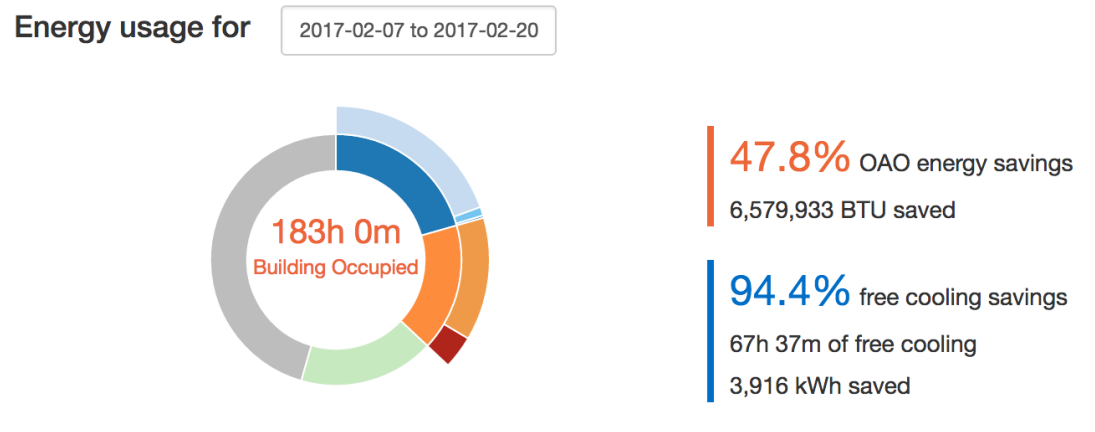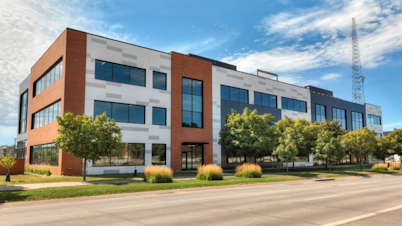
How 75F Increases Energy Efficiency for Rooftop Units
Do you have several rooftop units (RTUs) with nothing more than a thermostat to control them? 75F provides a simple way to get remote control and group your RTUs at a lower cost. Imagine having the capabilities of a building automation system at the cost of a WiFi thermostat.
Retrofit existing or spec new build rooftop units with 75F to increase energy efficiency and enjoy remote control and diagnostics at a fraction of the competition. Advanced economizer controls, including Demand Control Ventilation (DCV) and comparative enthalpy economy, from 75F improve efficiency by up to 30%, while improving occupant comfort and indoor air quality(IAQ). An easy installation and a lower cost, as well as payback in as little as one year, makes this an easy decision.
Smarter Economizers
An economizer is a device designed to make a package RTU more energy efficient. The economizer controls the RTU's outside air damper and brings in fresh outside air which can provide free cooling when conditions are right. It also helps meet IAQ requirements. While few RTU economizers today are utilizing the Internet of Things (IoT), its inception enables intelligent companies to make smarter, more efficient decisions that increase savings and decrease our impact on the planet.

Demand Control Ventilation
Demand Control Ventilation (DCV) is a control strategy in which we only open the outside air damper when IAQ demands it, based on CO2 levels measured in the return air system. The outside air damper is kept nearly closed (well below the minimum of 20-30% outlined above) most of the time. Only if the CO2 levels rise is the outside air damper opened to reduce them. If CO2 levels are low (say because the building is only partially occupied), DCV can save a lot of energy when the outside temperature is cold as it does not require you to heat that outside air up to 72°F. The same principle enables DCV to also save energy in hot, humid weather.

Free Cooling
That same fresh outside air can provide free cooling when conditions are right. For example, if it were 72°F inside and 55°F outside, fresh air coming in at 55°F would help cool down the building. Free cooling through the economizer frequently works out nicely in the spring and fall and the outside air damper can be opened up well past the minimum. It’s just like opening up a window on a spring day instead of turning on the A/C, which helps save energy.
The 75F solution for Rooftop Units is part of our integrated suite for complete building intelligence. The system is compatible with staged and modulating RTUs, outside air dampers, and exhaust relief fans, as well as our range of discreet, secure sensors.










